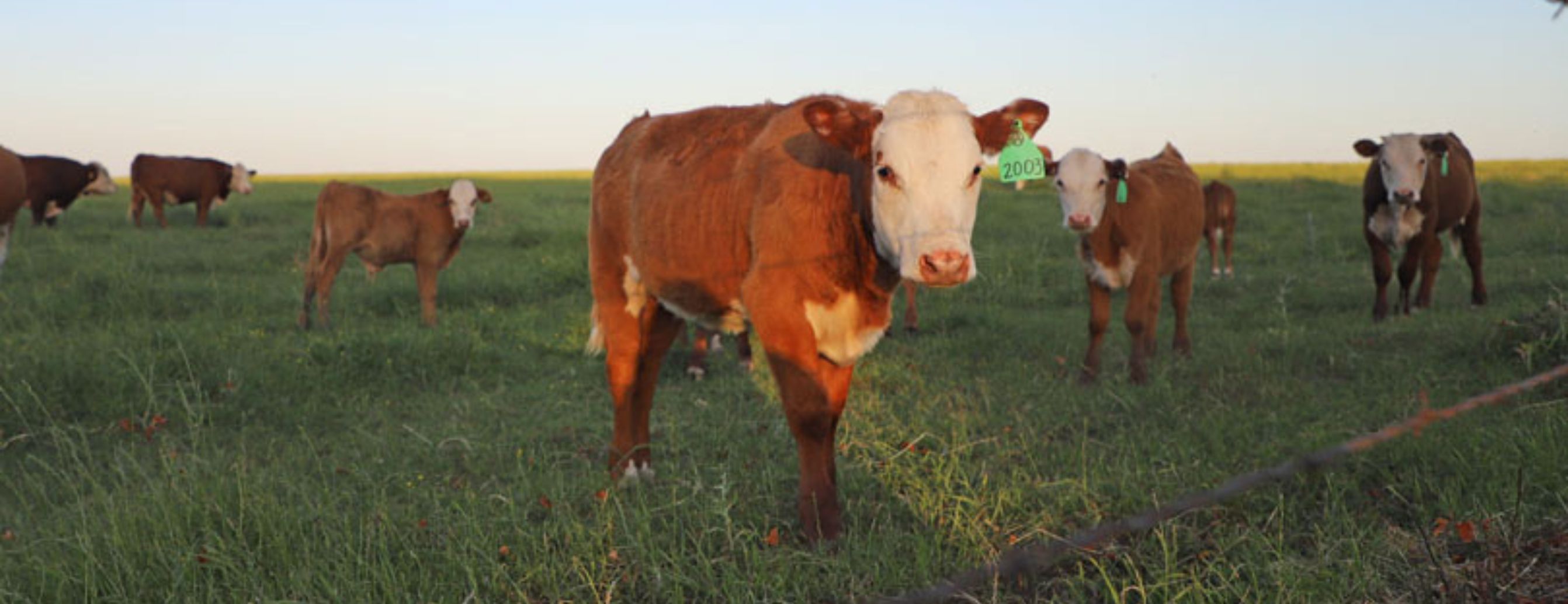
Preventing Pinkeye in Cattle with Fly Control
The risk of pinkeye in cattle increases in the summer.
Pinkeye is a common and costly infectious disease that affects herds across Texas and the nation.
While ranchers vaccinate their calves against a range of diseases when turning them out to pasture, vaccines for pinkeye are not effective in many cases.
That’s because pinkeye is a complex disease involving multiple bacterial strains and risk factors. It begins when the eye’s outer layer, the cornea, becomes irritated. Once damaged, the cornea becomes vulnerable to bacterial infection.
“Anything that causes eye irritation, such as ultraviolet light, dust, seed heads from plants or tall weeds, can make cattle more susceptible to pinkeye,” said Dr. Bob Judd, veterinarian and host of Texas Vet News on the Texas Farm Bureau Radio Network.
Flies are a primary vector, transferring bacteria from one animal to another as they move through the herd. That’s why fly control may be the most critical tool for preventing the spread of pinkeye.
It not only helps reduce irritation but also breaks the chain of transmission and infection.
“It’s important neighboring ranchers do the same, as flies can travel a significant distance from herd to herd and spread the disease,” Judd said. “However, all you can do is control flies in your herd, and this will decrease transmission of pinkeye.”
Effective fly control requires an integrated approach.
“There’s no one-size-fits-all method,” Judd said. “You need to know what kind of flies you’re dealing with. Different flies require different control methods.”
Fly tags, pour-on treatments, back rubbers, dust bags and feed-through insect growth regulators (IGRs) are all commons tools. IGRs are especially effective when started early in the season, but their effectiveness is reduced if neighboring cattle are not treated.
Nutrition also plays a role in disease prevention. Proper levels of macro and micro minerals help cattle maintain strong immunity and overall health.
“It’s important to check your cattle regularly and treat pinkeye cases early with systemic antibiotics approved for treatment of pinkeye,” Judd said. “There are a wide variety of antibiotics available for treatment. Consulting with your veterinarian needs to be the first step in pinkeye management.”
Flies cost the U.S. cattle industry more than $6 billion annually by reducing weight gain and milk production. Pinkeye’s impact on production and profitability is often overlooked but should be seriously considered.






